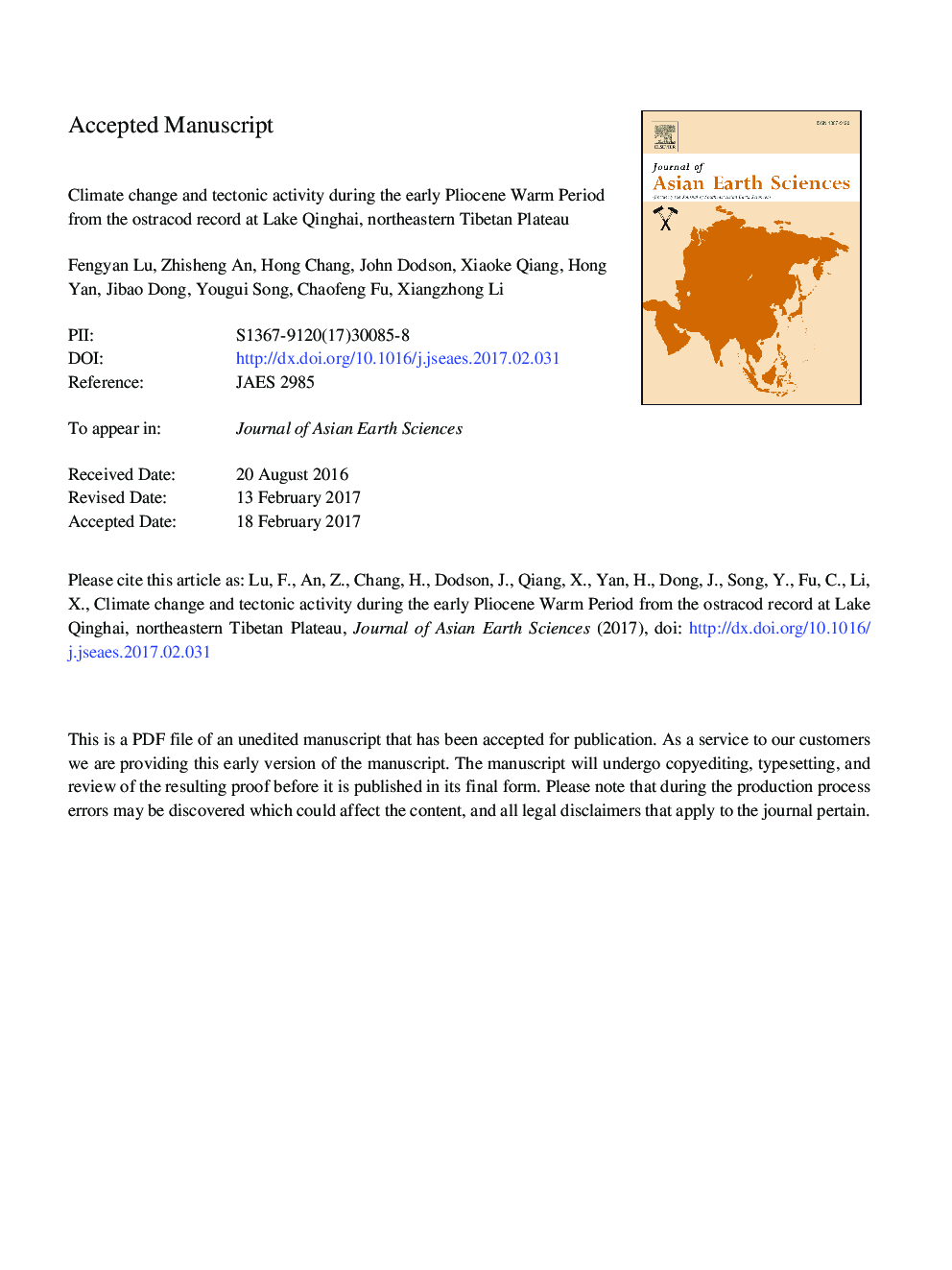| Article ID | Journal | Published Year | Pages | File Type |
|---|---|---|---|---|
| 5786066 | Journal of Asian Earth Sciences | 2017 | 47 Pages |
Abstract
We present a high-resolution ostracod record from a Lake Qinghai sediment core with a record of the period 5.10-2.60Â Ma, thus covering the EPWP. Ostracods appear at 4.63Â Ma and are most abundant until 3.58Â Ma, while a body of water was present at the core site. This suggests a phase of humid climate and an intensified Asian Summer Monsoon (ASM), which is consistent with a warmer and wetter climate in the early Pliocene. Within this period the ostracod record shows some variabilities in lake level with deeper periods suggesting more intense ASM compared to those with shallower water. The disappearance of ostracods at 3.58Â Ma may provide evidence for the uplift of Qinghai Nanshan (south of Qinghai Lake) since this is when the ASM intensified.
Related Topics
Physical Sciences and Engineering
Earth and Planetary Sciences
Geology
Authors
Fengyan Lu, Zhisheng An, Hong Chang, John Dodson, Xiaoke Qiang, Hong Yan, Jibao Dong, Yougui Song, Chaofeng Fu, Xiangzhong Li,
